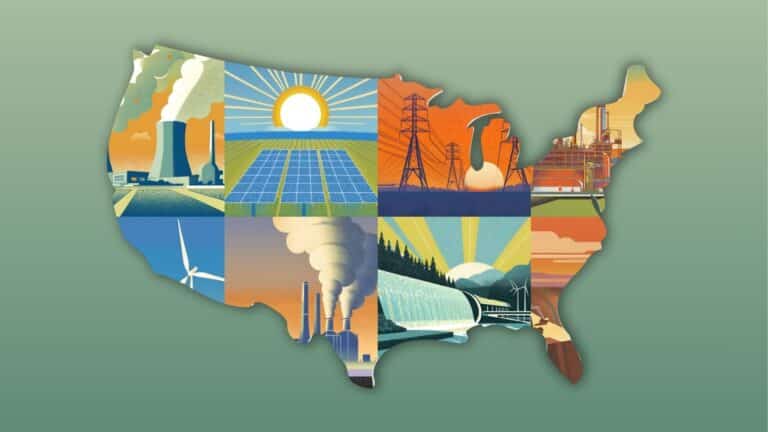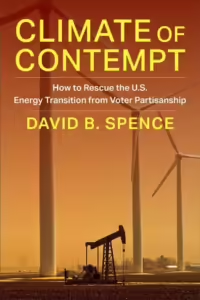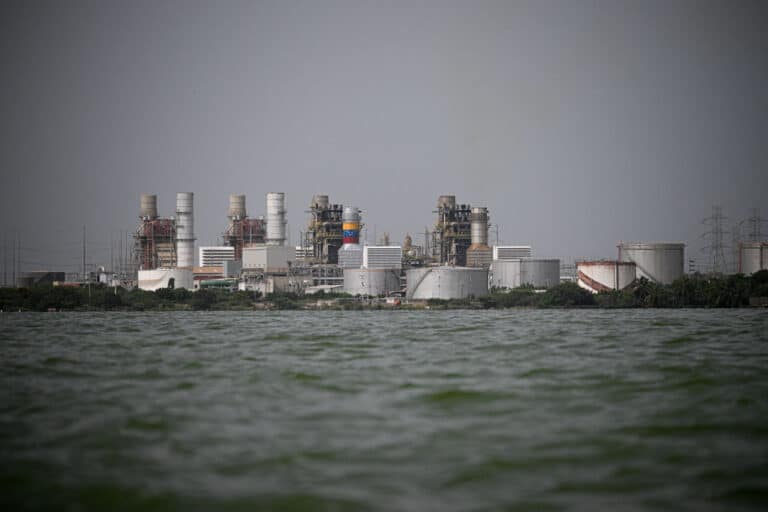Full report
The Time for a Green Industrial Policy Is Now
Op-eds & Essays by Jason Bordoff • March 15, 2021
Current Access Level “I” – ID Only: CUID holders and approved guests only. Building Access: Normal building operating hours with exceptions. Read more about the campus status level system and campus access information. See the latest updates to the community regarding campus planning.
Op-eds & Essays by Jason Bordoff • March 15, 2021
Now that U.S. President Joe Biden’s $1.9 trillion plan for economic stimulus and pandemic relief has become law, his administration will turn its attention to a multitrillion-dollar plan to rebuild the United States’ ailing infrastructure. Its scope goes far beyond roads and bridges. Viewed in combination with other parts of Biden’s economic agenda, it reflects a new openness on both sides of the aisle to what has traditionally been known as industrial policy. Critics deride industrial policy as protectionist and as the government picking “winners,” but when it comes to clean energy—a top priority for Biden—a push by his administration to build new and innovative clean energy sectors using industrial policy may actually be the greatest contribution it can make to combating climate change.
Industrial policy, long anathema to mainstream economic policymakers in Washington, is back in vogue. The Biden administration’s Build Back Better economic plan includes targeted support for specific industries to make them more competitive with Asia and Europe and government procurement provisions to boost domestic manufacturing with “Buy America” requirements. As White House economist Jared Bernstein wrote in Foreign Policy, “the rationale for industrial policy is as strong as ever.” Biden’s national security advisor, Jake Sullivan, similarly wrote in Foreign Policy that “advocating industrial policy … should be considered something close to obvious.” Even Republicans, such as Sen. Marco Rubio, have been willing to deviate from the free-market’s gospel by endorsing industrial policy.
The push for industrial policy has been particularly strong for clean energy—as a way to combine battling climate change with building strategically important parts of the economy. The Green New Deal in 2019 drew the link between achieving net-zero emissions and creating millions of jobs by investing in the “industry of the United States.” Biden’s top economic advisor, Brian Deese, said, “some of the biggest opportunities” in climate policy right now are “what some people would call straight-out industrial policy.”
Industrial policy is a phrase used to mean different things. Broadly speaking, it refers to government intervention in the economy to promote and protect targeted sectors, often those considered strategically important. The term is therefore instinctively distasteful to those schooled in the laissez-faire, free-market orthodoxy of Adam Smith’s “invisible hand.” They worry about a creeping state capitalism that favors well-connected companies, stifling innovation and competition.
In reality, of course, the energy sector has never been free of government intervention. Nearly every source of energy receives some degree of favorable tax treatment. Nuclear energy receives government liability protection. Government investment and research gave rise to the shale revolution. As Robert McNally points out in his book, Crude Volatility: The History and the Future of Boom-Bust Oil Prices, the Texas Railroad Commission was the most successful oil cartel in history in setting prices, and even a Republican president like Dwight D. Eisenhower protected the domestic oil industry from the threat of imported oil.
To be fair, there are good reasons for government intervention in the energy market. Energy use and production can impose harm on others, such as through air pollution and carbon emissions. Energy innovation delivers benefits to all of us beyond the economic gains the innovator can capture. Energy infrastructure investment, such as pipelines, transmission lines, and electric vehicle chargers, may be hampered if any one firm’s investments benefit all their competitors or if it risks monopolistic market power of energy delivery mechanisms.
The argument for government’s role in the energy sector is even stronger today. First, the world faces an existential threat from climate change. With time running short to begin sharply curbing emissions, market forces will not deliver the pace of transition needed without robust government intervention. Second, the scale of that transition creates enormous economic opportunity to build new energy sectors. With the economy in a deep hole from the pandemic, leading in these new sectors can spur significant job growth. Finally, given the strategic importance of energy—critical to every citizens’ economic and physical well-being and safety, as the recent crisis in Texas reminded us—there is a strong national security rationale to develop these technologies and capabilities in the United States. As the energy system transitions to cleaner alternatives, there will be new risks associated with the critical minerals’ supply chains required for renewable energy and batteries, cybersecurity, and global trade chokepoints, which argues for reinforcing the domestic U.S. industrial base in these technologies.
To tackle the problem of climate change, Sullivan and Biden’s China advisor, Kurt Campbell, persuasively argued that the United States must pursue not only cooperation but also economic competition with China, for example. Noting that both Democrats and Republicans “are making a convincing case for a new U.S. industrial policy,” they called for more government investment in infrastructure and research in clean energy, among other areas, to confront such a “challenging economic competitor” as China.
The argument against industrial policy to combat climate change is that the government cannot anticipate which technologies will deliver the cheapest solutions. Yet, as the International Energy Agency explained, most of the key technologies the energy sector needs to reach net-zero emissions are known today. Market forces are still powerful—when properly directed by a carbon price—to give firms and consumers the right incentives to adopt and develop those technologies and to determine which ones emerge as the best solutions in different energy sectors.
Moreover, critics of industrial policy argue that if the goal is to reduce emissions as fast as possible, it should matter less whether the technology is made in the United States than whether it is as cheap as possible so more people will adopt it. Germany’s Energiewende, a comprehensive plan to shift the country to renewable energy, has been criticized for its high cost per ton of emissions avoided, which economists have estimated to be between $600 and $1500, much costlier than most other policy interventions. (To put the German numbers in context: The Obama administration estimated the total harm caused by one ton of carbon dioxide to be around $50, although there are good arguments to revise that figure higher.) Jason Furman, a Harvard professor and former Obama administration economic advisor, said “if you think climate change is the biggest challenge facing the country … you should want to make sure a lot of solar and wind energy is produced in the United States. You shouldn’t care nearly as much where panels and turbines are produced.”
Furman’s view is correct if the goal is to cut emissions in the United States as fast as possible. But what if the goal is to decarbonize the entire world’s emissions as fast as possible? What if the goal is to show climate leadership by helping all nations achieve net-zero emissions? In that case, the measure of U.S. climate policy should be less about how fast it brings down domestic emissions, only 15 percent of the world’s annual total, than about how fast it brings down the cost of clean technologies needed for the rest of the world to decarbonize.
Some clean energy technologies, such as solar and wind power or electric vehicles, are fairly cost competitive today relative to their carbon-intensive counterparts. Yet as Bill Gates explained in his new book, the cost difference between carbon-emitting and carbon-free production—what he calls the “green premium”—remains exceptionally high for many sectors and technologies, such as cement and steel, air travel and shipping, long-duration energy storage to cope with the intermittency of renewable energy, and steady sources of electricity like nuclear power or natural gas with carbon capture and storage. These technologies may not be needed to make a large dent in emissions by 2030, but they will absolutely be needed to achieve net-zero emissions by mid-21st century. Consider that the largest source of global greenhouse gas emissions comes from what Gates calls “making things,” such as the production of cement, steel, and plastics—sectors that will almost certainly need nascent technologies to decarbonize.
To promote domestic industries developing technologies for such hard-to-decarbonize sectors, policies should boost demand for such products, spur their deployment, and lower production costs. As first U.S. Treasury Secretary Alexander Hamilton famously explained: “In matters of industry, human enterprise ought, doubtless, to be left free in the main, not fettered by too much regulation; but practical politicians know that it may be beneficially stimulated by prudent aids and encouragements on the part of the Government.”
What might such a clean energy industrial policy look like? Dramatically increasing clean energy research and development funding can accelerate needed innovation. Subsidies can lower the cost of clean energy technologies, and a carbon price can increase the cost of carbon-intensive alternatives. The government can use its procurement power to create more demand or reduce risk for developers by signing long-term energy purchase agreements or guaranteeing them a certain price by paying the difference to prevailing market prices (the “contract for difference” model used in the United Kingdom). Low-cost loans and loan guarantees can support projects by lowering the cost of capital and the barriers to accessing private capital because of perceived technological risk. Infrastructure investment and streamlined permitting can boost demand and overcome chicken-and-egg problems. For example, there may be little incentive to develop zero-carbon hydrogen or install carbon-capture technology on power plants if there are no pipelines to transport fuel or carbon dioxide—but firms will not build the infrastructure until the new technology is commercialized. Trade and economic policy can align U.S. competitiveness with a global clean energy transition, such as through export finance to help clean energy companies compete with Chinese and other competitors in emerging markets. Some argue industrial policy should also protect U.S. firms through import tariffs or “Buy America” provisions, but such protectionist tools risk backfiring if retaliatory measures by other countries close export markets to these new domestic industries.
There are three reasons a U.S. clean energy industrial policy makes particular sense today. First, the technologies needed for sectors that are hard to decarbonize also offer many of the biggest economic opportunities for growth. According to the International Energy Agency, almost half of the cumulative emission reductions needed to achieve net-zero emissions by 2050 come from technologies that are not yet commercially available. China already dominates the market for solar panels and batteries, a result of government decisions taken more than a decade ago, so it would be very difficult for the United States to displace China in these technologies, which China already produces very cheaply. By contrast, the United States is well-positioned to build a strong industrial base to produce and export zero-carbon energy in the form of hydrogen and ammonia, fuel cells to produce zero-carbon electricity, or carbon-capture and removal technologies.
Second, these technologies will be needed to decarbonize globally, and by bringing the cost of these technologies down through government investments, Washington can help accelerate their deployment outside the United States as well. In this way, a U.S. industrial policy to promote clean energy can serve not as protectionism but as one of the country’s greatest contributions to global efforts to combat climate change. In the future, roughly 95 percent of all greenhouse gas emissions will come from outside the United States. Yet developing market countries, which are poorer and use much less energy per capita than developed countries do, will not adopt low-carbon solutions unless they are affordable.
Third, industrial policy that drives down the cost of clean energy “green premiums” while also putting U.S. citizens to work can be among the most effective ways to account for the United States’ historic responsibility for the climate change problem. Climate change results from the cumulative total of all carbon emissions over time, and as of 2019, the United States has contributed 25 percent. By contrast, the entire continent of Africa represents only 2 percent. One way to address this inequity is for wealthy countries to send cash to poorer countries. For example, the Biden administration has pledged that the United States will fulfill its 2014 commitment to provide climate-related assistance to poorer countries, of which $2 billion is still outstanding. But making it affordable for developing countries to grow their energy use and prosperity in climate-friendly ways can be a far greater contribution.
At present, U.S. climate policy ambition is being framed around what commitment Biden will make to reduce domestic emissions by 2030. Yet the steps the Biden administration takes to invest in nascent clean energy technologies and research can be even more important to long-term temperature stabilization goals, even if most of the dividends come after 2030 because of the time it takes for hydrogen, long-duration power storage, carbon capture, advanced nuclear power, and other emerging technologies to scale.
Measured only by how much it costs to reduce a ton of carbon emissions, industrial policy that targets specific sectors of the clean energy economy at home may seem misguided. After all, it’s cheaper to import a solar panel from China than to manufacture it domestically. But at a time when the U.S. economy is in a deep hole and clean energy represents a sector of both rapid growth and national security significance, industrial policy is looking more attractive. That is even truer when considering the United States’ responsibility for climate change and what breakthroughs are needed to make it feasible for poorer countries to develop without exacerbating the problem. To rebuild the U.S. economy and demonstrate global climate leadership, clean energy industrial policy is an idea whose time has come.
November’s election for president of the United States will have crucial implications for the nation’s and world’s energy and climate policies.

Why is the United States struggling to enact policies to reduce carbon emissions? Conventional wisdom holds that the wealthy and powerful are to blame, as the oligarchs and corporations that wield disproportionate sway over politicians prioritize their short-term financial interests over the climate’s long-term health.


Full report
Op-eds & Essays by Jason Bordoff • March 15, 2021